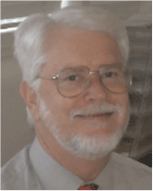Ecological engineering for climate mitigation and adaptation—a case study for the North West Shelf*
P. Wheen A , S. Kim A , M. Lawrence A and J. Ridley AOcean Nourishment Corporation.
The APPEA Journal 51(2) 685-685 https://doi.org/10.1071/AJ10065
Published: 2011
Abstract
This paper introduces the Australian-developed Ocean Nourishment technology, as well as the science, its regulation, and its potential commercial application for the North West Shelf.
Ocean nourishment is a form of ecological engineering, designed to transfer carbon from the ocean's sunlit surface zone to the largest carbon sink on the planet: the ocean. It is a scaleable and economical form of bio-mimicry; simulating the ocean's natural biological processes. Nourishing the surface ocean with macronutrients increases the movement of atmospheric CO2 into the deep-ocean carbon store.
Short lifecycle microscopic plants—which are prolific carbon consumers—use sunlight to process the added nutrients. This additional marine productivity leads to reduced CO2 levels in both the upper ocean and in the atmosphere. Dispersing nitrogen alone allows the potential long-term (1,000 years) removal of one tenth (0.8 Gt carbon/annum) of present anthropogenic emissions.
In addition to carbon sequestration, there is a desirable by-product of the process. The increased marine productivity will lead to increased fish stocks, which will assist in feeding the world's human population. Individual licenced sites would be capable of sequestering 5–8 Mt of CO2 at $25–35 per tonne. This is estimated to produce an additional harvest of 300,000 tonnes of fish each year.
The path to commercialisation for such a promising technology with global reach and untried application requires focussed scientific application. Establishing revenue streams for carbon sequestration or fisheries enhancement is complex. International regulation is being addressed by the LondonConvention/London Protocol of the International Maritime Organisation.

Peter Wheen, BE (Hons), FIEAust, MAICD, has more than 25 years of engineering management experience and construction expertise in both private and government sectors. Peter has been responsible for planning and implementation technically complex, award winning, multi-disciplinary, engineering infrastructure projects in the USA, Australia and southeast Asia. His particular focus is entrepreneurial approaches to innovation and sustainability in project leadership and delivery. He is a founding director of ONC and has been chairman of the board since 2004. He is also a trustee on the board of the not-for-profit Ocean Nourishment Foundation. |

Shaun Kim, BSc (marine science), MAppSc (coastal management), is a scientist experienced in physical and biogeochemical oceanography and computer modelling. He joined ONC's research and development team in 2007. Shaun's research includes assessing the impacts of nutrient cycling on primary and secondary production and he has helped develop numerical models of these processes in the pelagic ocean environment. |

Martin Lawrence, BSc (Hons), MSc, PhD, has many decades of experience in research and management in both science and technology. He worked for nine years for the Comprehensive Nuclear Test Ban Treaty Organisation, first overseeing the establishment of a monitoring system for the global ocean, and then coordinating the operation and maintenance of the (four technology) global network. Earlier, he served as the scientific advisor to the Royal Australian Navy. In recent years, he has concentrated on the science and international negotiations related to the Ocean Nourishment process. |

John Ridley, BSc (Hons), MSc, is an environmental scientist with 21 years of practical experience in environmental management across three continents. He specialises in biological systems, sustainable resource management and environmental assessment and planning. John was appointed managing director of Ocean Nourishment Corporation (ONC) in 2007 and has been on the board of directors since 2004. He is leading the ONC charge to get oceans considered fully in the wider international climate and food security policy debates. |
References
Baird M.E. Walker S.J. Wallace B.B Webster I.T. Paslow J.S. 2003Commonwealth Scientific and Industrial Research Organisation, 2008—Ocean surface currents and temperature. Accessed 6 April 2009 <http://www.cmar.csiro.au/remotesensing/oceancurrents>.
Conti, L., and Scardi, M. (2010). Fisheries yield and primary productivity in large marine ecosystems. Marine Ecology Progress Series 410, 233–44.
Furnas, M. (2007). Intra-seasonal and inter-annual variations in phytoplankton biomass, primary production and bacterial production at North West Cape, Western Australia: Links to the 1997–1998 El Niño event. Continental Shelf Research 27, 958–80.
Gilding, P., and Preston, P., 2010—Carbon induced financial disruption: linking climate science to investment risks and opportunities. Accessed April 2011. http://www.paulgilding.com/fileshare/carbon-induced-financial-disruption-gilding-and-preston.pdf.
Herzfeld, M., Parslow, J., Sakov, P., and Andrewartha, J., 2006—Biogeochemical modelling on Australia's North West Shelf. North West Shelf Joint Environmental Management Study: Technical Report No. 8. Hobart, Tasmania: CSIRO Marine and Atmospheric Research.
Jones, I.S.F., 2003—The enhancement of marine productivity for climate stabilization and food security. In: Richmond, A. (ed.) Handbook of microalgal cultures: biotechnology and applied phycology. Oxford, UK: Wiley-Blackwell, 534–44.
Jones, I.S.F. (2011). Contrasting micro- and macro-nutrient nourishment of the ocean. Marine Ecology Progress Series 425, 281–96.
Judd, B., Harrison, D.P., and Jones, I.S.F., 2008—Engineering ocean nourishment. In: World Congress on Engineering (WCE). Proceedings of the world congress on engineering: volume two. Accessed April 2011. http://www.inference.phy.cam.ac.uk/sustainable/refs/ocean/icmeem_juddjones.pdf
Mizumukai, K., Sato, T., Tabeta, S., and Kitazawa, D. (2008). Numerical studies on ecological effects of artificial mixing of surface and bottom waters in density stratification in semi-enclosed bay and open sea. Ecological Modelling 214, 251–70.
Rabalais, N.N., Turner, R.E., Justic, D., Dortch, Q., and Wiseman, W.J., 1999—Characterization of hypoxia: topic one: report for the integrated assessment on hypoxia in the Gulf of Mexico. In: US Department of Commerce: National Oceanic and Atmospheric Administration (NOAA): Coastal Ocean Program. Silver Spring, Maryland, USA. Decision Analysis Series No. 15.
The Royal Society, 2005—Ocean acidification due to increasing atmospheric carbon dioxide. Policy Document 12/05. London, UK: The Royal Society.
The Royal Society, 2009—Geoengineering the climate: science, governance and uncertainty. Policy Document 10/09. London, UK: The Royal Society.
UNEP, 2009a—The environmental food crisis: the environment’s role in averting future food crisis. Stevenage, Hertfordshine, England: UNEP/Earthprint.
UNEP, 2009b—Blue carbon: the role of healthy oceans in binding carbon: a rapid response assessment. Stevenage, Hertfordshine, England: UNEP/Earthprint.
Wallace, D.W.R., Law, C.S., Boyd, P.W., Collos, Y., Croot, P., Denman, K., Lam, P.J., Riebesell, U., Takeda, S., and Williamson, P., 2010—Ocean fertilization: a scientific summary for policy makers. IOC/UNESCO, Paris (IOC/BRO/2010/2).


